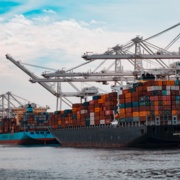
On the heels of an NACD economic analysis showing that approximately $5 billion worth of the chemicals U.S. chemical distributors import will be impacted by the China Section 301 List 3 tariffs, most of those tariffs went into effect earlier this week.
The analysis, produced by John Dunham & Associates and featured in The New York Times, paints a dire picture for our industry and our economy. Price increases on List 3 chemicals hit with 10 percent tariffs in 2018 will have a significant impact. But, when 25 percent tariffs go into effect next year, we can expect prices to rise throughout the supply chain and at the final point-of-sale, causing demand to drop, resulting in more than 7 million tons of reduced sales. According to our analysis, this will represent a reduction of about 12 percent in chemical distributor sales.
Lower volumes will lead to job reductions as distributors need fewer truck drivers, administrative and warehouse staff and others. The analysis shows that over 5,900 chemical distributor jobs could be lost because of higher prices resulting from tariffs, with a total of nearly 28,000 jobs lost when businesses that supply chemical distributors and those who depend on re-spending by direct and supplier firm employees are included. The cost of List 3 25 percent tariffs to the American economy in the chemicals distribution alone could be nearly $5.1 billion.
It is true there is good news to be had regarding the U.S. Trade Representative’s final decision on the List 3 tariffs. Despite the thousands of products on the list, the agency has been looking for goods that can only be sourced from China for potential removal from the list. Additionally, 30 products out of the 387 on the proposed List 3 that NACD identified our members import from China were removed in the final decision. Furthermore, while the products on the list do not slow down the “Made in China 2025” initiative, they do help prevent China from concentrating on higher value supply chain products.
However, while these tariffs could have some favorable impacts on the American economy and it appears the administration is working to reduce the negative impacts, the reality is that they will significantly hurt job creation, consumers prices and manufacturer costs. Many NACD members have already expressed deep concern about the impact these tariffs will have on their businesses if implemented. Smaller specialty companies whose business models depend primarily on certain chemicals included on List 3 may be forced to close their doors. Many of the chemicals on the initial List 3 are no longer manufactured in the U.S., and finding new suppliers is a lengthy and costly process.
Unfortunately, it looks like these tariffs are a fact of life and according to news reports and statements by President Trump, there are another $267 billion in Chinese products waiting in the wings.
While this is a hard road for many of us, there are steps chemical distributors can take to lessen the tariffs’ impact. NACD’s tariff resource page is updated with the information you need on deadlines, exclusion processes and request forms so that industry can draft exemption requests.
It is also important to create relationships with lawmakers who can support your requests. Reach out to your representative and senators, explaining your business and impact on the community, as well as the reasoning behind your specific product exclusion request. How do you depend on that product, and what will happen to your business if is included in the final tariff list?
When tariffs do get implemented that harm your business, there are still steps you can take. Conduct a thorough tariff line review to ensure every product is properly classified and look for opportunities to reclassify products into more appropriate categories that are not subject to the tariffs. As was shared in a recent NACD webinar with international trade attorney Deborah Stern, there may be fine lines that are worth investigating on this front; tariff classification can be as much of an art as a science.
Other avenues to help mitigate the impact may include:
These are just some ideas to help you lower the impact of Section 301 China tariffs, and NACD is always available to help. If you have found other ways to cope with the tariffs, we would love to hear them. Feel free to share those strategies with NACD’s Allison Tuszynski at atuszynski@acd-chem.com.